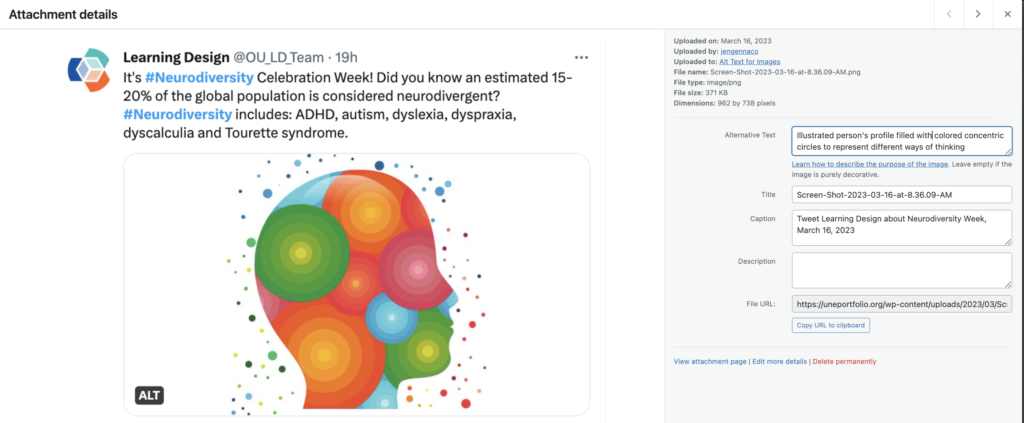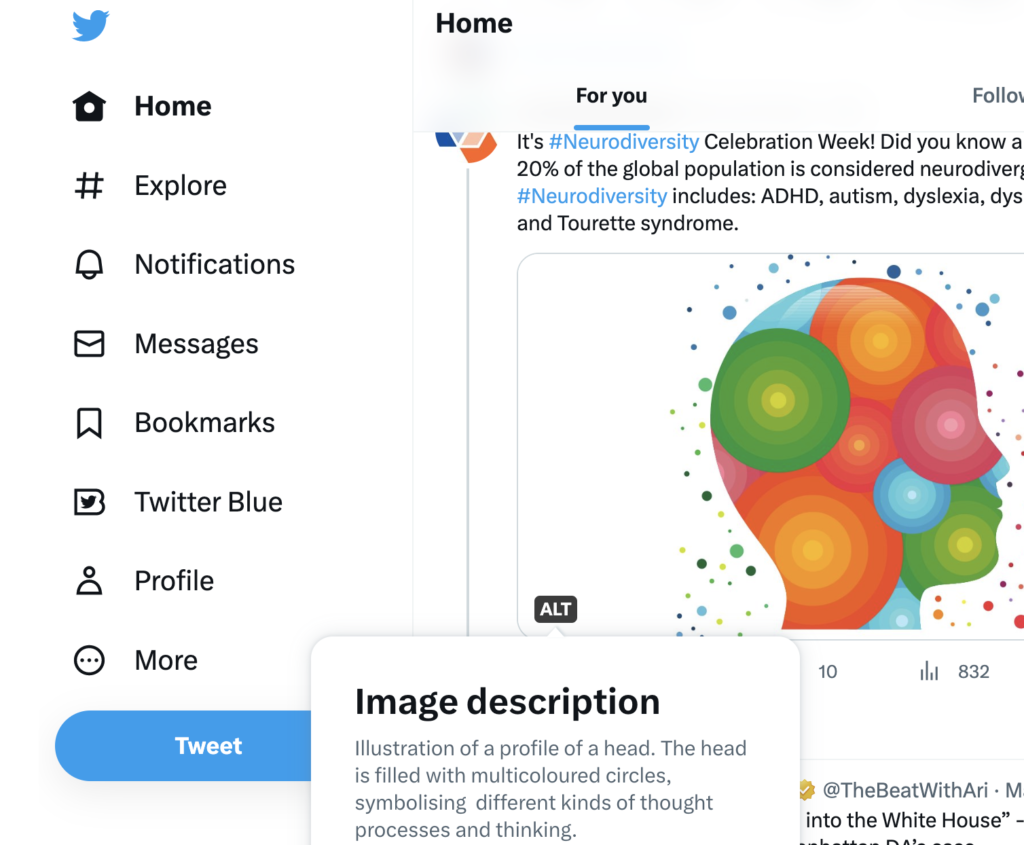As you build your professional online presence with your ePortfolio, be sure to add Alt Text to images. Alt text makes your site more accessible to visitors who use screen readers. The American Foundation for the Blind explains screen readers as the “the interface between the computer’s operating system, its applications, and the user.” As a tool, the screen reader detects and reads (or translates to braille) an image’s content to a visually impaired visitor or someone who has chosen not to display images (usually due to connectivity or data issues). Without Alt text, screen readers sometimes default to the file name, which is unhelpful and distracting. On the instructional site AxessLab, author Daniel Göransson posts guidelines for writing Alt text and also shows examples screen reads of Alt text. Generally, Göransson’s suggestions are to describe the image (color, composition, description of subjects, action in image) as well as to give a context to provide the purpose of the image in your post. For example, Alt text may include the description and some context, such as “a black and white photo from Vietnam War of an empty helmet in the foreground and a group of four soldiers huddled around another in a foggy, forest background,” calling attention to the empty helmet, soldiers’ stance, and setting. The caption should be used for credits; in this case, “Photo by Catherine Leroy, featured in Time Magazine’s ‘Who is the Enemy Here?'” Göransson also suggests only calling attention to the type of image if it is notable (as in the above example of a black and white photo or in the below example to note the image is an illustration).
Adding Alt text is easy in WordPress. When uploading your image (or from your collection of images go to Media>Library on the dashboard), select an image and add a caption and Alt text. When you have finished your description, click on a different field, and WordPress will save the change (“Saved” will appear in the upper right corner).

Alt text is also easy to add in social media posts by editing the image. Below is an example of adding Alt text to a Tweet. Twitter refers to it as an image description. For directions on using Alt text for Instagram, click here or on Facebook, click here. Meta products (Instagram and FB) use automatically generated Alt text descriptions, but you may edit them or read them for accuracy. Learn more about the different functions of alt text and captions and to additional suggestions for writing alt text from journalist and professor Patrick Garvin.

